Text

‘’Memes Culture & the articulation of the protest.
The memes culture has carved its name on social media and it’s a new reality. A meme conveys a long message along with sarcasm even with as little as only four to five words and a picture. The whole story is summarized in a few words and a simple picture that conveys the whole concept and which best fits the scenario intended. It is not a too old phenomenon in the digital world and has mainly been shaped by political rhetoric, jokes, a reaction towards certain global concepts like anti-war, anti-globalization, and anti-capitalism. Usually, such things are targeted in a very artistic, funny, and exemplary way.
According to Patrick Davidson, in his essay (The Language of the internet Memes) ‘’An internet meme is a piece of culture, typically a joke, which gains influence through online transmission’’ (2009, p.122).
Articulation means the portrayal of the protest on a different platform by utilizing the technology, the way and method we adopt to convey the message to our target audience, and the strategies to counter the narrative of anti-publics.
How Cambridge dictionary defines articulation, “The way in which you express your feelings and ideas or able to express thoughts and feelings easily and clearly.”
There are three types of articulation, vocalization, i.e., through songs or musical events highlighting the issue, verbalization includes effective and creative slogans regarding issue and visualization, most effective way to communicate audience, which can be in the video or visuals form.
“Every articulation is a montage of various elements - voices, images, colors, passions or dogmas - within a certain period of time and with a certain expanse in space. The significance of the articulated moments depends on this. They only make sense within this articulation and depending on their position. So how is protest articulated? What does it articulate and what articulates it” (Hito Steyerl,2002)
There are three ways in which internet memes are analyzed in terms of their structures, that is to say, the ideal, the behavior, and the manifestation. These three elements are the main concept behind internet memes. Through defining typology of the memes, Knobel and Lankshear mentioned two types namely: static and remixed memes. Static ones are not elaborated by different users. However, the second type of remixed memes are ‘’replicated via evolution, adaptation or transformation of the original meme vehicle’’ (Knobel and Lankshear, 2005). Most of the memes on the internet belong to the second type the remixed ones.
It has become a great tool in the context of digital activism as well, as it has become easier for digital activists to convey a message or to give a sarcastic and funny reaction to any event, or political leader statement, or other common life-related happenings.
The power of meme culture can be gauged from the fact that it creates a sort of similar reaction towards any happening and one meme became representative of the whole society or certain segment of society reaction to a particular event or happening.
The meme culture is very popular and prevalent in turkey. Usually, political leaders or celebrities are targeted through memes. One example is which also became very popular worldwide is that of Turkish President Tayyib Erdogan(Gas Father).
There are a lot more examples of popular memes of popular personalities including President Donald Trump, Prime Minister Imran Khan amidst inflation crises and different funny memes on the way celebrities dressed up in award shows especially the Famous Fil festival Met Gala.
If we analyze the memes culture in the way how citizens are using the public sphere, where digitalization has shifted the paradigm of the public sphere and widens its scope beyond physical places. Now it extends to the internet as it's everyone’s place, and the meme culture is one of the ways and demonstration people use the digital public sphere. That is the reason you will find commonality and uniformity in the people’s reaction and expression of opinion in form of memes. Memes are a civil action and have become a new way to communicate in a digital era. People also resort to memes when they are targeting a particular person or event indirectly and it is very intricately designed that inference could be drawn either way.
These memes in turn create pressure on public figures and politicians to adopt a more cautious discourse in public to avoid humiliation in form of memes as one meme reaches in seconds which is usually derogatory to the subject’s personality harming the professional or political career. Not only that governments and state policies are also targeted through it, as it is the new medium through which netizens express their opinions.
Reference:
https://www.google.com/url?sa=t&source=web&rct=j&url=https://globalmediajournaltr.yeditepe.edu.tr/sites/default/files/S%25CC%25A7eyda%2520BARLAS%2520BOZKUS%25CC%25A7_1.pdf&ved=2ahUKEwi3o6W68PHzAhUCY8AKHR8bDbwQFnoECBwQAQ&usg=AOvVaw1RLMwWbEgbCpcZXZZ52vJK
https://www.jstor.org/stable/j.ctv11hptdx.5?seq=4#metadata_info_tab_contents
https://dictionary.cambridge.org/dictionary/english/articulation
https://transversal.at/transversal/0303/steyerl/en
0 notes
Text
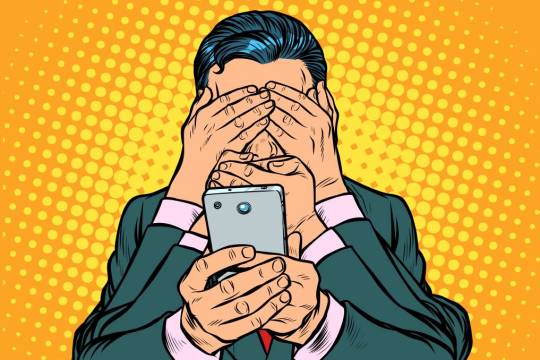
Media censorship & gatekeeping concept (The culture of connectivity)
Freedom of speech and the right to know are fundamental human rights guaranteed by the United Nations, however, controlled media are failing to fulfill their responsibility to the benefit of humanity due to censorship imposed by stakeholders or pressure groups. Activists around the globe update their audience through different social media platforms.
What is censorship? Cambridge dictionary defines censorship as,
“The action of preventing part or the whole of a book, film, work of art, document, or another kind of communication from being seen or made available to the public, because it is considered to be offensive or harmful, or because it contains information that someone wishes to keep secret, often for political reasons.”
With the convergence of media, the public manages to watch censored content on social media, such as on Facebook's news feed always shows the news headlines, political development, attention-seeking acts, and other users' activities shared by strangers or by our close friends. A mix of personal and public media changes our perception of communicative interaction with the convergence of media. Social media apps emerged with media convergence, such as Facebook; it is a fascinating world to connect with people worldwide.
According to Metcalfe’s law,
“The value of communications networks increases proportionately to the square of the number of the people that are connected to it. If you are the only person with a phone, it’s not much use, but once you know three or four people with phones, it becomes much more useful. And once everyone has a phone, it changes from being useful to essential” (Media convergence, 2012, p63).
In Arab countries, media is state-controlled there is no freedom of speech, “Jamal Khashoggi, was a prominent Saudi journalist, covered major stories, including the Soviet invasion of Afghanistan and the rise of the late al-Qaeda leader Osama Bin Laden, for various Saudi news organizations. For decades, the 59-year-old was close to the Saudi royal family and served as an adviser to the government. But he fell out of favor and went into self-imposed exile in the US in 2017. From there, he wrote a monthly column in the Washington Post in which he criticized the policies of Crown Prince Mohammed bin Salman, the son of King Salman and Saudi Arabia's de facto ruler. In his first column for the Post in September 2017, Khashoggi said he had feared being arrested in an apparent crackdown on dissent overseen by the prince. In the Jamal Khashoggi murder Saudi crown prince Muhammad Bin Salman was involved in his murder.” (BBC)
“Dictatorships use brute force to shut down uncooperative media outlets and exile, imprison, or execute the journalists. Under the pretext of maintaining law and order, autocratic governments ransack news and enforce censorship. Resultantly, only a minority of people living in mature democracies can access diverse and independent sources of information. The press plays an important part in democratization and transparency of society and also plays a vital role in the elimination of illiteracy internationally” (Newth, 2010).
References.
Book, Media Convergence 2012 by Graham Meikle, Sherman Young.
https://journals.sagepub.com/doi/pdf/10.1177/1461444809341264
https://www.researchgate.net/publication/281785140_Media_censorship_Freedom_versus_responsibility
https://dictionary.cambridge.org/dictionary/english/censorship
https://www.researchgate.net/publication/281785140_Media_censorship_Freedom_versus_responsibility
0 notes
Text
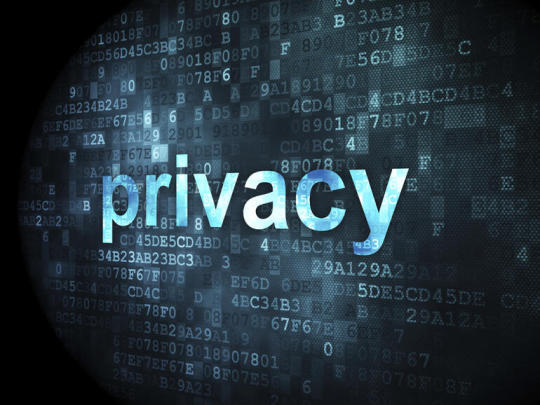
0 notes
Text
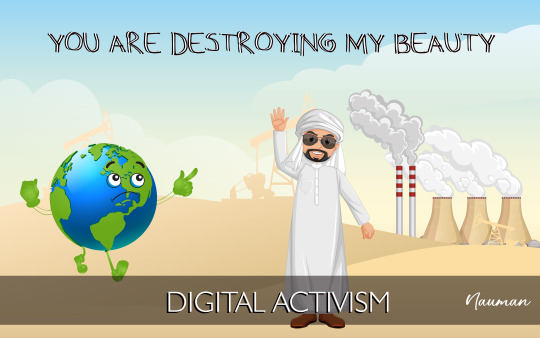
Climate Change and Role of Activists.
Climate change refers to shifts in temperatures and weather patterns carrying harmful implications for the Earth planet and Mankind. The accelerating force of extreme rising temperatures with each passing year, a significant anthropogenic contribution to the increase in atmospheric CO2 and other GHGs resulting from fossil fuels emissions and deforestation is contemporary human activities that contrast with nature endowed cycle of life. Human Development in technological advancement and dependency on those devices has made it nearly impossible to change human behaviour.
Climate change is the 13th goal of United Nations sustainable development goals aims to reduce devasting effects of climate change resulting in changes in rainfall patterns, droughts, heatwaves, disease, and viruses are some of the harmful consequences of climate change that make it difficult for humans to survive and breathe in the world.
“The UN Climate Change Conference in Glasgow (COP26) brought together 120 world leaders and over 40,000 registered participants, including 22,274 party delegates, 14.124 observers, and 3.886 media representatives. For two weeks, the world was riveted on all facets of climate change — the science, the solutions, the political will to act, and clear indications of action” (UN0, 2021).
Some nations, organizations, and activists have raised their voices and concerns for imminent threats and called for collective efforts to fight with the monster in the form of climate change like Greta Thunberg, Rachel Carson, and Wangari Muta Maathai.
United nation framework convention on climate change and UN convention to combat desertification are some of the efforts put by the United Nations to respond to the emergency of climate crises in a good and effective manner.
However, different stakeholders have a part to play. Countries that heavily rely on counter environment conducive practices and industries serve as a hindrance to combat climate change, like the GCC gulf cooperation Council. However, the Middle East will be the most acutely affected by the climate crisis. The rentier states of the Gulf Cooperation Council (Saudi Arabia, Kuwait, the UAE, Oman, Bahrain, and Qatar) are highly vulnerable to climate change. Nevertheless, their rentier structure hinders their ability to act decisively against it, and that is why they do not take decisive steps in this regard because such steps will prove against their economic policies and their economic dependency on crude oil.
References
https://unfccc.int/files/press/backgrounders/application/pdf/press_factsh_science.pdf
https://www.un.org/en/climatechange/cop26
https://www.britannica.com/topic/Gulf-Cooperation-Council
0 notes
Text
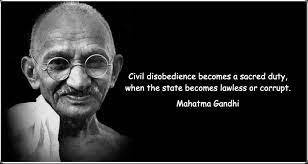
Civil Disobedience, Electronic Civil Disobedience, and Hacking
Have you ever thought of the difference between civil disobedience and other forms of violations of state laws?
Historically Civil Disobedience proved a significant step in molding ruthless laws and practices into moral and just-based law mechanisms. Civil disobedience is a legal protest that is revolutionary and, at the same time, regarded as a militant protest aimed at breaching the law in a statute.
However, what is the decisive factor in creating a difference between civil disobedience and other forms of political protests and public violations and disrespect of the rule of law is that people engaged in a protest in former kind take the responsibility of the legal repercussions and they refuse to obey a particular law restricting themselves in the legal boundaries of the rule of law because for that they have jurisprudential reasoning which is usually refusing the law or practices which defeat the main essence and purpose of the law. On the other hand, the latter form of protests and disobedience is more violent, having no respect for the boundaries of the rule of law, and their objective mainly is politically motivated while civil disobedience’s purpose is reformative.
How Cambridge dictionary defines civil disobedience,
“The act by a group of people of refusing to obey laws or pay taxes, as a peaceful way of expressing their disapproval of those laws or taxes and in order to persuade the government to change them”.
Rawls writes in the book Civil Disobedience in Focus,
“I shall begin by defining civil disobedience as a public nonviolent, conscientious yet political act contrary to law usually done with the aim of bringing about a change in the law or policies of the government. By acting in this way, one addresses the sense of justice of the majority of the community and declares that in one’s considered opinion the principles of social cooperation among free and equal men are not being respected”. (Book, Civil Disobedience in Focus)
Indian leader Gandhi, also known as Mahatma or the Great soul, read the essay of an American writer, “Civil Disobedience” by Henry David during jail. Gandhi coined the word "civil disobedience" to express his approach of nonviolent protest, refusing to cooperate with injustice, which he called "nonviolent civil resistance." He demonstrated his opposition to the registration legislation by supporting worker strikes and organizing a large nonviolent march. Finally, the Boer government decided to modify the registration law's most objectionable clauses.
In 2014, now prime minister of Pakistan, Imran Khan led a mass level of civil disobedience when at that time PM, Nawaz Sharif was cleared by the accountability court on raiwind palace, the hudabiya papers mills, and for the possession of illegal assets.
“Acting in the tradition of non-violent direct action and civil disobedience, proponents of Electronic Civil Disobedience are borrowing the tactics of trespass and blockade from these earlier social movements and are experimentally applying them to the Internet. A typical civil disobedience tactic has been for a group of people to physically blockade, with their bodies, the entranceways of an opponent's office or building or to physically occupy an opponent's office -- to have a sit-in. Electronic Civil Disobedience, as a form of mass decentred electronic direct action, utilizes virtual blockades and virtual sit-ins. Unlike the participant in a traditional civil disobedience action, and ECD actor can participate in virtual blockades and sit-ins from home, from work, from the university, or from other points of access to the Net” (Wrays,1999).
“The contemporary conception of hacktivism seems to concern itself more with overtly political hacking. It is such a recent development that journalists have only barely begun to discover it, while scholars have had little time to consider it. There are numerous websites devoted to hacking, but very few are devoted to Hacktivism per se. Although, one website devoted to Hacktivism was created in the fall of 1998 by a group called The Cult of the Dead Cow”.
References
https://www.jstor.org/stable/362139?seq=1#metadata_info_tab_contents
https://dictionary.cambridge.org/dictionary/english/civil-disobedience
Book, Civil Disobedience in Focus by Hugo Adam Bedau 1991.
( https://www.webfx.com/research/electronic-civil-disobedience-hacktivism.html Stefan Wray, "On Electronic Civil Disobedience," Peace Review 11, no. 1, (1999), forthcoming; Electronic Civil Disobedience archive 1998 (http://www.nyu.edu/projects/wray/oecd.html) Hacktivism web page (http://www.hacktivism.org); Cult of the Dead Cow homepage (http://www.cultdeadcow.com/) )
Bibliography References
Rawls, John, 1999 [1971], A Theory of Justice, Cambridge, MA: Harvard University
Press. Revised edition.
Gandhi, Mohandas, 1973, Selected Writings of Mahatma Ghandi, R. Duncan (ed.),
Glasgow: Fontana/Collins. –––, 1999, The Collected Works of Mahatma Ghandi, Publications division Ministry
of information and broadcasting Government of India. 98
vols.http://www.gandhiserve.org/e/cwmg/cwmg.htm
(Habermas, Jürgen, 1985, “Civil Disobedience: Litmus Test for the Democratic
Constitutional State,” J. Torpey, trans. Berkeley Journal of Sociology, 30: 95–116.)
0 notes
Text

Digital Activism & Brexit
In the contemporary world, a thought might have crossed the majority of your minds that, democracy, the only viable political system in the world and its nexus with the internet and digitalization of everything has proved vital or fatal? There are two approaches, one thought is that digital activism has consolidated the principles of democracy, for instance, accountability, observance of human rights, freedom of speech and the list just goes on. While some held the view that it is fatal as we have an example in form of Russian agents when they attempted to influence the 2016 election by inserting ads on Facebook and the concept of ‘’filter bubble’’ by activist Eli Pariser and Legal Scholars Lawrence Lessig where individuals receive only that kind of content that they have either selected or have been selected for them by third parties defeating the very essence of democracy.
Democracy is just one example, there are numerous other fields of life, in which digital activism has played a great role which will be discussed in this blog.
One Example we have in form of reaction to Brexit. Brexit was actually the withdrawal of the United Kingdom from the European Union. As social media changes the ways news and information is distributed, accessed, and engaged with, we are forced to consider its implications for both journalism’s role in shaping public discourse, but also for the way media conveys information back-and-forth between citizens and the political system. The twitter Leave and Remain trend in the Brexit referendum played a great role.
Research article By Hanska ahy with name (Tweeting for Brexit: How social media shaped the Referendum campaign) states ‘’Overall, Twitter users who supported leaving the EU were much more active and motivated in advancing their cause than Remainers were in advocating continued EU membership. One possible explanation of the dominance Leavers achieved on Twitter maybe that slogans such as ‘vote Leave’, ‘take control’, or even ‘Brexit’ was more suited to simple, soundbite messaging than the Remain campaign’s slogans and arguments (which is particularly useful given the character constraints of a tweet)’’
Recently, the UK petrol crisis was on top that took place on Twitter with the hashtag #ukpetrolcrises. Evidence of contemporary digital protest.
The petrol shortage crisis took the form of digital protest, showing the chaotic and panicked situation across the country. Citizens took to Facebook and YouTube, showing chaotic videos of people waiting in long lines for petrol. The digital protest caused pressure on the government which resulted in the army started supplying service stations in the United States to send more than a week of shortages that have pressurized petrol pumps to close and left motorists without fuel. Such digital protests spread like a wildfire.
The petrol crises are further aggravated by some journalists reporting on it, cashing and exploiting the circumstances, primarily government while there are many other factors for the crises including the coronavirus pandemic prompting thousands of EU drivers to leave the UK. The series of lockdown restrictions also led to difficulties in training and testing new home-grown drivers to replace those who left.
That is a separate debate as to who to be blamed for current crises, but overall Britishers had a mixed response and behavior to the crises. During the crises, almost every UK citizen was expressing his opinion, some criticizing UK’s government, the Britain mistake to exit EU while some were blaming the authority dealing with petroleum. Britisher's response to the crises was mixed which they were expressing on social media. The country is in need of competent workers. The shortages were also blamed on a lack of heavy goods truck drivers, as well as foreign and professional tanker drivers.
Aljazeera also reported on the nexus of crises and Brexit by stating “ The government had resisted offering more visas for months, despite an estimated shortage of about 100,000 hauliers and industry warnings from various sectors that the COVID-19 pandemic and Brexit had combined to worsen the situation”.
Summing up, digital activism has been proved vital for the citizens to express their concerns and protest the crisis along with pressurizing the government. As it could be sensed that digital activism has a big role in consolidating democratic principles, for example, expressing opinions, protesting, and criticizing the government and other stakeholders.
Authorities References
(1)
https://www.google.com/amp/s/theconversation.com/amp/why-social-media-may-not-be-so-good-for-democracy-86285
https://www.cnn.com/2021/10/04/business/fuel-shortage-uk-army/index.html
(2)
https://www.google.com/amp/s/inews.co.uk/news/world/fuel-crisis-europe-brexit-petrol-station-shortages-no-plans-help-uk-1220873/amp
(3)
https://www.independent.co.uk/news/uk/home-news/fuel-shortage-social-media-panic-buying-b1928352.html?amp
(4)
https://www.google.com/amp/s/wap.business-standard.com/article-amp/international/explainer-why-and-how-the-uk-is-experiencing-a-fuel-crisis-121092801580_1.html
(5)
https://www.google.com/amp/s/www.aljazeera.com/amp/news/2021/9/27/panic-buying-leaves-petrol-pumps-dry-in-major-british-cities
(6)
http://eprints.lse.ac.uk/84614/1/Hanska-Ahy
0 notes
Text
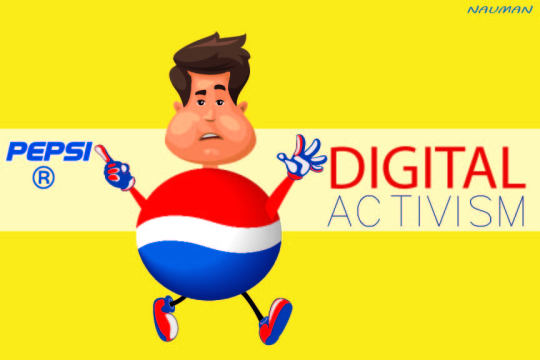
Avant-Gardes, Sex Pistols & Dada movements
Cambridge dictionary defines Avant-gardes as
“The artists, writers, and musicians whose ideas, styles and methods are highly original or modern in the period in which they live.”
Research shows that the term Avant-garde used in 1793 by a newspaper.
“The extension of the concept of an Avant-garde from military to political discourse was a product of the French revolution and its aftermath. It was a revolutionary military newspaper that first coined this usage of the term: L’Avant-Garde de l’armee des Pyrenees Orientales appeared in 1794 in support of the Jacobin Terror of 1793, bearing on its banner the image of a sword engraved with the watchword ‘La liberte ou la mort’ (Liberty or Death)”. It was in France in the year after the restoration of the monarchy in 1815 that, as I noted earlier, social theorists across the political spectrum sought ways of improving upon the associated political and social settlement and one of the most influential groups on the left of the political spectrum was led by Henri de Saint-Simon.” (Davida Cottington,2013, p22).
Avant-gardes are considered highly influential in society, particularly in the visual, abstract, or melodic expressions, whose works are described predominantly by strange and exploratory techniques. With creative ideas and unique abilities, they can bring change to society. In the past, many movements such as "Sex pistols" and "Dada Movement" became successful because of the Avant-gardes; they grabbed the people's attention through their artwork. Moreover, being "anti-war," dada was also "anti-bourgeois" and had political empathy with the left-wing.
Dada was an art movement that came into existence during the First World War in Zurich by Hugo Ball in 1916, in a negative response to the horrors and folly of the war. During this movement artwork created by the Dada artists, was based satirical, ironical, and to some extent nonsensical in nature.
“In Berlin, where the consequences of the war were immediate profound and inescapable, the Dada movement that emerged at the close of 1918 ( a dada club was founded then by Raoul Hausmann, Richard Huelsenbeck, and Johannes Baader) was correspondingly politically and socially engaged: the ‘First German Dada Manifesto’ that they published at the time declared that ‘the highest art will be that which in its conscious content presents the thousandfold problems of the day, the art which has been visibly shattered by the explosions of last week… The best and most extraordinary artists will be those who every hour snatch the tatters of their bodies out of the frenzied cataract of life, who, with bleeding hands and hearts, hold fast to the intelligence of their time.’ The berlin movement, which also included George Grosz and Hannah Hoch, was involved in the social upheavals and the Spartacist revolution which broke out at the end of the war in the German capital. Its art images and objects, ferociously subversive, made striking use of the medium of photomontage.” (Davida Cottington,2013, p22).
The Sex Pistols were a rock music group that originated the British punk movement in the 1970s. The song "God Save the Queen." became a sign of political and social disruption in the United Kingdom.
Wikipedia says “Punk rock is a type of music that appeared in the 1970s. With roots in 1960s garage rock, punk bands rejected 1970s rock's perceived excesses. A typical song by them featured fast-paced chord progressions and hard-edged melodies, stripped-down instruments, and often shouted political or anti-establishment lyrics. With punk, many bands self-produce their recordings, which are then distributed through independent record labels.”
References
https://dictionary.cambridge.org/dictionary/english/avant-garde
Book (THE AVANT-GARDE by DAVID COTTINGTON 2013)
https://www.tate.org.uk/art/art-terms/d/dada
https://en.wikipedia.org/wiki/Sex_Pistols
0 notes
Text
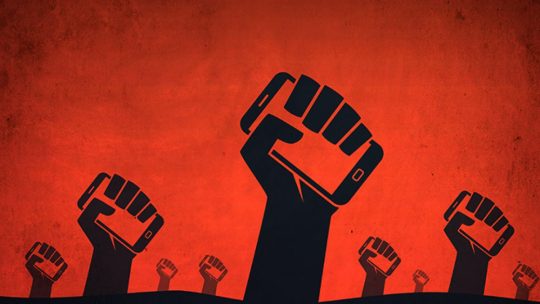
What is Digital Activism? (Hacktivism & Leaktivism)
The word activism covers a wide area of causes, objectives, motives, and outcomes using direct action. The action intended to bring the objective or positive reform could be social, economic, political, environmental, and other objectives that aim to bring a greater good in the society.
Cambridge Dictionary defines activism as,
“The use of direct and noticeable action to achieve a result, usually a political or social one”
Now the rigorous action for such reform or for achieving the determined result is done through different mediums. It ranges from benign to more harsh actions depending upon the resistance and the nature of the objective. Different factors come to play as the society’s pre-established norms and preferences, religious norms, moral values, indoctrination, and culture, etc. It ranges from petitioning elected officials, writing letters to newspapers, running for the political campaign, walking in a mass march formation to more harsh forms as demonstrative protests and boycotts like street marches, strikes, or hunger strikes.
We also need to consider the overwhelming evidence, generated by decades of research, that traditional journalism frequently has supported the political status quo, given its overreliance on elite government and corporate sources and given the political views of its corporate owners. In turn, mainstream news organizations often delegitimize progressive social movements (Carragee,1991; Gitlin, 1980; Gottlieb,2015).
The aforementioned ways of activism had become quite traditional and have been replaced and transformed by digital activism. The political events and protests are done through a digital medium which helps to mobilize thousands of new supporters to a diverse range of causes. The modern approach of activism revolves around cyber and digital campaigning, boycotting, and awareness as due to the internet and technology; the world has become a global village.
Digital activism suggests a focus on how activists use communication strategies and advanced media platforms to convey their message in support of various campaigns and causes. With the advancement in technology, digital media is helping activists to highlight the issues and reach the broader public. Digital media has changed the political game in many ways due to its omnipresence and networking capabilities. Most activism is based on communication for social change, policy interventions, feminism’s digital wave, and new political genres.
According to the research ‘Digital Activism: A Contemporary Overview.’
“Some might ask what the difference between “online activism” and “digital activism” is. At the first glance, those two concepts seem similar. The term “online activism” refers only to activism on the Internet excluding the use of the mobile phone or other offline digital devices (Joyce, 2010). Digital activism is “the best term to discuss all instances of social and political campaigning practice that use digital network infrastructure” (Joyce, 2010: ix) the use of the mobile phone or other offline digital devices (Joyce, 2010). Digital activism is “the best term to discuss all instances of social and political campaigning practice that use digital network infrastructure.” (Joyce, 2010: ix).
The effectiveness and viability of digital activism can be gauged from the series of reformations and change in societies across the globe as such sort of activism is not restricted by area, time, and a number of people as it reaches everyone anywhere in the world. We have numerous examples in this regard as to the effectiveness of digital activism in the form of different political movements such as Black Lives Matter and Me Too.
Cambridge dictionary defines hacktivism,
Hacktivism: “someone who uses computers to try to achieve political change, for example by attacking websites or illegally entering another computer system”.
A harsh form of digital activism is called hacktivism through which the cyber-attacks are conducted regularly on the digital systems of rich and powerful and even terrorist organizations. Not only those important and confidential political documents are leaked as the recent Panama papers and revelations by Wikileaks, and Edward Snowden and more recent one, pandora papers as examples of ‘’leaktivism’’.
“To fight a hundred times and win a hundred times is not a blessing. The blessing of blessings is to beat the other man’s army without getting into the fight yourself”.
The Art of War Sun Tzu.
Digital activism has proved very viable in consolidating democratic principles. Digital activism has proved more fruitful and viable in developing countries like Pakistan to which I belong. A majority of its population are illiterate which is fatal for democracy and electing the right persons but awareness through social media campaigns helped them to identify the right people for government and such digital awareness performed a great role in realizing and aware them of their inherent rights and then questioning government for its shortcomings.
References /Bibliography.
https://dictionary.cambridge.org/dictionary/english/activism
https://www.britannica.com/topic/digital-activism
https://www.researchgate.net/publication/299538041_Digital_Activism_A_Contemporary_Overview
http://mindcontrol-research.net/wp-content/uploads/2016/09/32_I_RyanPaul_CyberneticGuerrillaWarfare_RadicalSoftware_volume1numero3.pdf
0 notes
Text
The Photographer’s Gallery
Art is an effective and influential means of activism because art possesses social relevance. Activists around the world do not depend on the controlled media, they always try to establish an organized voice by creating artworks to protest in society.
“Art is a form of expression which is based on the concept of aesthetics. It is a tool to understand and interpret objects and events. Art is a communication tool that uses a variety of ways. Art is the most comprehensive and singular area of people's cultural life and personal experience”. (Artun, 2009: 20).
To understand the importance and necessity of the art, I got a chance to visit “The Photographer’s Gallery” London with my classmates, our class teacher Hannah Lammin arranged an academic visit to The Photographer’s Gallery.
In “The Photographer’s Gallery” there were a lot of ancient pictures along with old tools like a sewing machine and weighing machine which were displayed like art. In those pictures some were so astonishing that while contemplating upon those pictures, I got lost in them. A photograph (Martin Z.Margulies Collection, 1928) of a kid hanging over the pillar hit me, and I sketched the photo as well and did some artistic participation.
Moreover, in “The Photographer Gallery” there was a photo of a friend with black cat. The three boys standing in the photo also appealed to me as they are standing a feminine way, reflecting warm friendship and gestures while at the same time lost in observing something. The photograph defies and quashes certain stereotypes and superstitious things attached with the black cat, which is considered as the epitome of evil fate, especially when a cat crosses you on the way it is considered that you will have to face bad luck in the process of your progression in work or life. We can see in the photograph that people are less affected by the presence of a black cat, and it depicts that there are no such myths or stereotypes attached to a black cat in that society.
In “The Photographer’s Gallery” collection of Helen Levitt photography was also displayed as an art. The photos of passenger’s expressions with a candid camera in 1938, she carried it hidden under her coat. The shutter release cable in her bag, Levitt had been inspired by Walker Evans, who had already worked this artistic way.
Overall, it was a wonderful and useful learning experience that in the past how artists chose different ways to express their feelings through their artwork.
Reference
file:///C:/Users/mm0210s/Downloads/artsanat-sanateitimininnemi.pdf




1 note
·
View note
Text
‘’Selling of Historical and Cultural Significant Events Archives and Objects in Greenwich Market, London’’
This piece of writing is intended to draw the government and concerned authorities' attention towards the selling of war memorabilia in Greenwich Market, London. The war memorabilia and archives are mainly from World War II.
The cultural and historical significance of War Archives and Objects could not be emphasized less, as a lot of affiliations and rights of individuals are attached to it. By rights, I mean Public right to access to information and such archives and memorabilia serve as a great source of information about the past and wars and their importance in the context of Object biographies for several fields of research fields since most of the research resources are focused on WWII, these sources can be difficult to find.
Using such significant objects and war memorabilia for private ownership can result in a lack of war objects in museums. The apt place for those objects should be a museum which is the best place for storing objects of cultural significance.
In this regard, I would like to suggest that proper legislation should be done in this respect, banning the selling of cultural and prominent historical objects to private individuals, rather it shall be declared the exclusive right of museums to acquire and restore such objects. The reason being that, in museums not only those archives and objects, are stored and maintained properly but also the public can get access to it. This could be seen in another perspective to correspond such objects to public right rather a private right. Even if the selling couldn’t be banned completely, there should be the proper measure of acquiring it and the state and national museums shall have the prevalent right over others.
Secondly, there should also be the proper mechanism and set of rules which should govern the private museums' conduct towards such antiques.
Such priceless treasures belong to all of humanity and not the few and that those objects should not be the subject to be acquired by money.
In Thailand, antiquity dealers have to register for permission to sell with the Fine Arts Department with the lists of dealers that have FAD permits regularly announced in government gazettes as provided by the UNESCO website.
The national act on Export and Import of Goods (1966) is the first legal document that prohibits the export of religious statues and sculptures or fragments of the country.
For different purposes, the public needs to have access to such memorabilia and WWII has impacted almost the whole world and the public interest lies in knowing, seeing, and analyzing those objects and those objects themselves need proper preservation and maintenance to reserve them for people to come.
A wide variety of bullets, knives, signs, chains, shackles, symbolic badges, key chains, locks and keys, hammers, screws and scissors, and metallic signs, and different kinds of engraved metals are projected and offered for sale in the Greenwich market.
Those objects need to be in a place where it could be safely preserved and stored and should belong to those places where it was mainly used. In this regard, France’s President, Emmanuel Macron made a statement and initiated a report about the need for France’s museums to begin repatriating objects taken from Africa during colonization.
Concluding it, there should be a restriction on the projections and selling of such historical and cultural significant archives and antiques as it could clash with violating public at large right of access to cultural and historical objects. Proper action should be taken against Greenwich sellers selling such objects.
Authorities Sources
(1)
https://bangkok.unesco.org/content/art-and-antique-collectors-debate-how-they-can-support-ethical-trade
(2)
https://www.artworkarchive.com/blog/the-ethics-of-collecting-cultural-objects




0 notes
Text
Digital activism as a tool for consolidating democratic pricinples.

In the contemporary world, a thought might have crossed the majority of your minds that, democracy, the only viable political system in the world and its nexus with the internet and digitalization of everything has proved vital or fatal? There are two approaches, one thought is that digital activism has consolidated the principles of democracy, for instance, accountability, observance of human rights, freedom of speech and the list just goes on. While some held the view that it is fatal as we have an example in form of Russian agents when they attempted to influence the 2016 election by inserting ads on Facebook and the concept of ‘’filter bubble’’ by activist Eli Pariser and Legal Scholars Lawrence Lessig where individuals receive only that kind of content that they have either selected or have been selected for them by third parties defeating the very essence of democracy.
Democracy is just one example, there are numerous other fields of life, in which digital activism has played a great role which will be discussed in this blog.
One Example we have in form of reaction to Brexit. Brexit was actually the withdrawal of the United Kingdom from the European Union. As social media changes the ways news and information is distributed, accessed and engaged with, we are forced to consider its implications for both journalism’s role in shaping public discourse, but also for the way media conveys information back-and-forth between citizens and the political system. The twitter Leave and Remain trend in the Brexit referendum played a great role.
Research article By hanska ahy with name (Tweeting for Brexit: How social media shaped the Referendum campaign) states ‘’Overall, Twitter users who supported leaving the EU were much more active and motivated in advancing their cause than Remainers were in advocating continued EU membership. One possible explanation of the dominance Leavers achieved on Twitter maybe that slogans such as ‘vote Leave’, ‘take control’, or even ‘Brexit’ were more suited to simple, soundbite messaging than the Remain campaign’s slogans and arguments (which is particularly useful given the character constraints of a tweet)’’
Recently, UK petrol crisis was on top that took place on Twitter with the hashtag #ukpetrolcrises. Evidence of contemporary digital protest.
The petrol shortage crisis took the form of digital protest, showing the chaotic and panicked situation across the country. Citizens took to Facebook and Youtube, showing chaotic videos of people waiting in long lines for petrol. The digital protest caused pressure on the government which resulted in the army started supplying service stations in the United States to end more than a week of shortages that have pressurize petrol pumps to close and left motorists without fuel.
Such digital protests spread like a wildfire, resulting in European Union officials making statements, also reported in inews.uk that ‘’such crises are inevitable after Britain cut itself off from its most important trade partner’’.
Mr Atema response to crises was also similar, blaming the UK for the crises as it has created for itself in the form of Brexit. The EU officials have called it a self-inflicted crisis due to cutting itself from the EU.
Also, a video posted on social media appeared to show a man pulling a knife on a fellow motorist at a forecourt in London, while at other stations, several fights over petrol have also been reported.
Regarding the impact of digital activism, Ms Mafferson told BBC Radio 4 that ‘’One of the reasons for this is social media. As soon as the tanker arrives at a filling station people on social media are advising that a tanker has arrived and it is like bees to a honeypot’’.
The petrol crises are further aggravated by some journalists reporting on it, cashing and exploiting the circumstances, primarily government while there are many other factors for the crises including the coronavirus pandemic prompting thousands of EU drivers to leave the UK. The series of lockdown restrictions also led to difficulties in training and testing new home-grown drivers to replace those who left.
That is a separate debate as to who to be blamed for current crises but overall Britishers had a mixed response and behaviour to the crises. During the crises, almost every UK citizen was expressing his opinion, some criticizing UK’s government, the Britain mistake to exit EU while some were blaming the authority dealing with petroleum. Britisher's response to the crises was mixed which they were expressing on social media.
Need and lack of skilled workers also felt in the country. The criticism was also towards the shortages due to a lack of heavy goods vehicle drivers and overseas and specialist tanker drivers. The farmers also warned that tons of food produce could go to waste and thousands of animals may have to be destroyed as there are not enough farm or abattoir workers to process the meat.
UK Prime Minister Boris Johnson vehemently felt the need and promised changes to the direction that the UK economy is travelling in, outlining plans for the country to become a ‘’high wage, high skill, high productivity economy’’.
Aljazeera also reported on the nexus of crises and Brexit by stating ‘’ The government had resisted offering more visas for months, despite an estimated shortage of about 100,000 hauliers and industry warnings from various sectors that the COVID-19 pandemic and Brexit had combined to worsen the situation’’.
Summing up, digital activism has been proved vital for the citizens to express their concerns and protest the crisis along with pressurizing the government. As it could be sensed that digital activism has a big role in consolidating democratic principles, for example, expressing opinions, protesting and criticizing government and other stakeholders.
Authorities References
(1)
https://www.google.com/amp/s/theconversation.com/amp/why-social-media-may-not-be-so-good-for-democracy-86285
https://www.cnn.com/2021/10/04/business/fuel-shortage-uk-army/index.html
(2)
https://www.google.com/amp/s/inews.co.uk/news/world/fuel-crisis-europe-brexit-petrol-station-shortages-no-plans-help-uk-1220873/amp
(3)
https://www.independent.co.uk/news/uk/home-news/fuel-shortage-social-media-panic-buying-b1928352.html?amp
(4)
https://www.google.com/amp/s/wap.business-standard.com/article-amp/international/explainer-why-and-how-the-uk-is-experiencing-a-fuel-crisis-121092801580_1.html
(5)
https://www.google.com/amp/s/www.aljazeera.com/amp/news/2021/9/27/panic-buying-leaves-petrol-pumps-dry-in-major-british-cities
(6)
http://eprints.lse.ac.uk/84614/1/Hanska-Ahy__tweeting-for-brexit.pdf
0 notes
Text
Digital Activism
The word activism covers a wide area of causes, objectives, motives, and outcomes by the use of direct action. The action intended to bring the particular objective or positive reform could be social, economic, political, environmental, and other objectives that aim to bring a greater good in the society.
Cambridge Dictionary defines activism as ‘’the use of direct and noticeable action to achieve a result, usually a political or social one’’.
Now the rigorous action for such reform or for achieving the determined result is done through different mediums. It ranges from benign to more harsh actions depending upon the resistance and the nature of the objective. Different factors come to play as the society’s pre-established norms and preferences, religious norms, moral values, indoctrination, and culture, etc. It ranges from petitioning elected officials, writing letters to newspapers, running for the political campaign, walking in a mass march formation to more harsh forms as demonstrative protests and boycotts like street marches, strikes, or hunger strikes.
The aforementioned ways of activism had become quite traditional and have been replaced and transformed by digital activism. The political events and protests are done through a digital medium which helps to mobilize thousands of new supporters to a diverse range of causes. The modern approach of activism revolves around cyber and digital campaigning, boycotting, and awareness as due to the internet and technology, the world has become a global village.
Digital Activism Matters.
“ Digital activism Matters as a form of activism that has consequences and as a form of activism that has the capacity to restructure the relationship between the news media and political change . Recent movements fuelled by digital activism, including the Occupy movement, Black Lives Matter and #MeToo movemen, have influenced public perception of issues salience, and to a degree, have produced institutional reforms. Black Lives Matter, for example has helped to end stop and frisk police tactics in multiple American cities” – Carrage, 2019, p. 362
Digital activism plays a vital role for effective institutional reforms to eliminate the discrimination from the society. Activists all over the world raise voice against the social injustice by utilising the digital platforms and also influenced the media for favourable reporting to strengthen their voice.
"Me Too and Men Too movements are the phenomena which gained its early foothold on the internet chat-boards to support sexual harassment victims. Generally, victims are supposed and encouraged to have a formalized complaint process, perhaps even by a prescribed format. But, social media, a new way to communicate, exposed the otherwise hidden problem via a movement called Me Too via attaching the hash tag #MeToo to the shared posts".
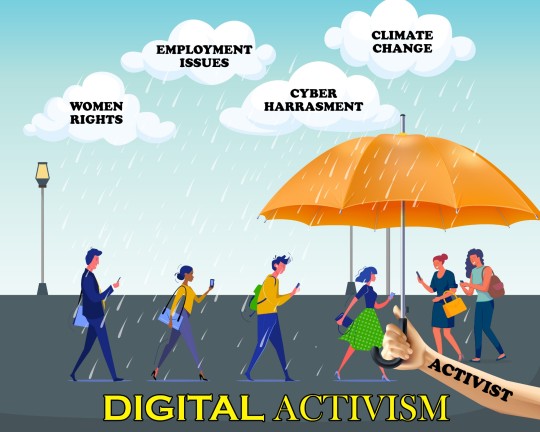
(Gupta & Arunima, 2019.)
Through this article we can analyse that everyone who was victim of sexual harassment at workplace shared their experience openly without any fear and it is all possible because of the digital activists.
As an article with the name of Digital activism by Marcela A. Fuentes in Online Britanica states ''Digital activism has proved to be a powerful means of grassroots political mobilization and provides new ways to engage protesters. Additionally, online actions can be important in countries where public spaces are highly regulated or are under military control. In such cases, online actions are a better option than possibly physically dangerous “live” actions.''
Not only does cyber-activism target a large audience but it provides detailed reasons and evidence for the need for intended reforms and change.
We see that every now and then there is a political campaign or awareness or voice for social reform is raised on different social media platforms like Twitter, Facebook, blogs website and Youtube, etc. For any sort of campaigning and activism, the reformers, politicians, and protestors resort to social media campaigning, e-mail, virtual sit-ins, and ‘’hacktivism’’ (disrupting Web sites).
The effectiveness and viability of digital activism can be gauged from the series of reformations and change in societies across the globe as such sort of activism is not restricted by area, time, and a number of people as it reaches everyone anywhere in the world.
We have numerous examples in this regard as to the effectiveness of digital activism in the form of different political movements listed in the article (Beyond hashtags) by Anthina Karatzogianni , as French labor protests, anti-austerity movement Occupy, Arab Spring uprisings in the middle east, etc.
Different forms of digital activism which can take very harsh forms as provided by Jordana J. George in research article (From clicktivism to hacktivism: Understanding digital activism) ''include digital spectator activities clicktivism, metavoicing, assertion; digital transitional activities: e-funding, political consumerism, digital petitions, and botivism; and digital gladiatorial activities: data activism, exposure, and hacktivism.'' A harsh form of digital activism is called hacktivism through which the cyber-attacks are conducted regularly on the digital systems of rich and powerful and even terrorist organizations.
Not only that important and confidential political documents are leaked as the recent Panama papers and revelations by Wikileaks, and Edward Snowden and more recent one, pandora papers as examples of ‘’leaktivism’’.
Digital activism has proved very vialble in consolidating democratic principles. In an Article (Educating Digital Citizens: An Opportunity to Critical and Activist Perspective of Sustainable Development Goals, pg 2) by Antonia Lozano-Díaz 1 and Juan S. Fernández-Prados, it is stated '' The Council of Europe incorporates the huge impact of the digital environment on life, economy and today’s society, as well as on education and citizen engagement. It considers the digital world as an exceptional means for people to express themselves, engage in and create new forms of social participation. It defines digital citizenship as “the capacity to participate actively, continuously and responsibly in communities (local, national, global, online and offline) at all levels (political, economic, social, cultural and intercultural)”
Conclusion
Digital activism has proved more fruitful and viable in developing countries like Pakistan to which I belong. A majority of its population are illiterate which is fatal for democracy and electing the right persons but awareness through social media campaigns helped them to identify the right people for government and such digital awareness performed a great role in realizing and aware them of their inherent rights and then questioning government for its shortcomings.
Source list
• https://en.m.wikipedia.org/wiki/Activism
• https://www.google.com/amp/s/theconversation.com/amp/beyond-hashtags-how-a-new-wave-of-digital-activists-is-changing-society-57502
• https://www.britannica.com/topic/digital-activism
• https://www.merriam-webster.com/dictionary/activism
• file:///C:/Users/rayyan%20tec/Downloads/sustainability-12-07260.pdf
• https://www.sciencedirect.com/science/article/abs/pii/S1471772717303470
https://scholar.google.com/scholar_url?url=https://journals.sagepub.com/doi/pdf/10.1177/2631831819862087&hl=en&sa=T&oi=ucasa&ct=ufr&ei=VYlnYbmyBonmmgHOrLOYCA&scisig=AAGBfm3TSC1e9ZJsquywODlv8BWSN1PIjQ
0 notes
Text
Digital Activism
The word activism covers a wide area of causes, objectives, motives, and outcomes by the use of direct action. The action intended to bring the particular objective or positive reform could be social, economic, political, environmental, and other objectives that aim to bring a greater good in the society.
Cambridge Dictionary defines activism as ‘’the use of direct and noticeable action to achieve a result, usually a political or social one’’.
Now the rigorous action for such reform or for achieving the determined result is done through different mediums. It ranges from benign to more harsh actions depending upon the resistance and the nature of the objective. Different factors come to play as the society’s pre-established norms and preferences, religious norms, moral values, indoctrination, and culture, etc. It ranges from petitioning elected officials, writing letters to newspapers, running for the political campaign, walking in a mass march formation to more harsh forms as demonstrative protests and boycotts like street marches, strikes, or hunger strikes.
The aforementioned ways of activism had become quite traditional and have been replaced and transformed by digital activism. The political events and protests are done through a digital medium which helps to mobilize thousands of new supporters to a diverse range of causes. The modern approach of activism revolves around cyber and digital campaigning, boycotting, and awareness as due to the internet and technology, the world has become a global village.
Digital Activism Matters.
“ Digital activism Matters as a form of activism that has consequences and as a form of activism that has the capacity to restructure the relationship between the news media and political change . Recent movements fuelled by digital activism, including the Occupy movement, Black Lives Matter and #MeToo movemen, have influenced public perception of issues salience, and to a degree, have produced institutional reforms. Black Lives Matter, for example has helped to end stop and frisk police tactics in multiple American cities” – Carrage, 2019, p. 362
Digital activism plays a vital role for effective institutional reforms to eliminate the discrimination from the society. Activists all over the world raise voice against the social injustice by utilising the digital platforms and also influenced the media for favourable reporting to strengthen their voice.
"Me Too and Men Too movements are the phenomena which
gained its early foothold on the internet chat-boards to support
sexual harassment victims. Generally, victims are supposed
and encouraged to have a formalized complaint process,
perhaps even by a prescribed format. But, social media, a new way to communicate, exposed the otherwise hidden problem
via a movement called Me Too via attaching the hash tag
#MeToo to the shared posts".
(Gupta & Arunima, 2019.)
Through this article we can analyse that everyone who was victim of sexual harassment at workplace shared their experience openly without any fear and it is all possible because of the digital activists.
As an article with the name of Digital activism by Marcela A. Fuentes in Online Britanica states ''Digital activism has proved to be a powerful means of grassroots political mobilization and provides new ways to engage protesters. Additionally, online actions can be important in countries where public spaces are highly regulated or are under military control. In such cases, online actions are a better option than possibly physically dangerous “live” actions.''
Not only does cyber-activism target a large audience but it provides detailed reasons and evidence for the need for intended reforms and change.
We see that every now and then there is a political campaign or awareness or voice for social reform is raised on different social media platforms like Twitter, Facebook, blogs website and Youtube, etc. For any sort of campaigning and activism, the reformers, politicians, and protestors resort to social media campaigning, e-mail, virtual sit-ins, and ‘’hacktivism’’ (disrupting Web sites).
The effectiveness and viability of digital activism can be gauged from the series of reformations and change in societies across the globe as such sort of activism is not restricted by area, time, and a number of people as it reaches everyone anywhere in the world.
We have numerous examples in this regard as to the effectiveness of digital activism in the form of different political movements listed in the article (Beyond hashtags) by Anthina Karatzogianni , as French labor protests, anti-austerity movement Occupy, Arab Spring uprisings in the middle east, etc.
Different forms of digital activism which can take very harsh forms as provided by Jordana J. George in research article (From clicktivism to hacktivism: Understanding digital activism) ''include digital spectator activities clicktivism, metavoicing, assertion; digital transitional activities: e-funding, political consumerism, digital petitions, and botivism; and digital gladiatorial activities: data activism, exposure, and hacktivism.'' A harsh form of digital activism is called hacktivism through which the cyber-attacks are conducted regularly on the digital systems of rich and powerful and even terrorist organizations.
Not only that important and confidential political documents are leaked as the recent Panama papers and revelations by Wikileaks, and Edward Snowden and more recent one, pandora papers as examples of ‘’leaktivism’’.
Digital activism has proved very vialble in consolidating democratic principles. In an Article (Educating Digital Citizens: An Opportunity to Critical and Activist Perspective of Sustainable Development Goals, pg 2) by Antonia Lozano-Díaz 1 and Juan S. Fernández-Prados, it is stated '' The Council of Europe incorporates the huge impact of the digital environment on life, economy and today’s society, as well as on education and citizen engagement. It considers the digital world as an exceptional means for people to express themselves, engage in and create new forms of social participation. It defines digital citizenship as “the capacity to participate actively, continuously and responsibly in communities (local, national, global, online and offline) at all levels (political, economic, social, cultural and intercultural)”
Conclusion
Digital activism has proved more fruitful and viable in developing countries like Pakistan to which I belong. A majority of its population are illiterate which is fatal for democracy and electing the right persons but awareness through social media campaigns helped them to identify the right people for government and such digital awareness performed a great role in realizing and aware them of their inherent rights and then questioning government for its shortcomings.
Source list
• https://en.m.wikipedia.org/wiki/Activism
• https://www.google.com/amp/s/theconversation.com/amp/beyond-hashtags-how-a-new-wave-of-digital-activists-is-changing-society-57502
• https://www.britannica.com/topic/digital-activism
• https://www.merriam-webster.com/dictionary/activism
• file:///C:/Users/rayyan%20tec/Downloads/sustainability-12-07260.pdf
• https://www.sciencedirect.com/science/article/abs/pii/S1471772717303470
https://scholar.google.com/scholar_url?url=https://journals.sagepub.com/doi/pdf/10.1177/2631831819862087&hl=en&sa=T&oi=ucasa&ct=ufr&ei=VYlnYbmyBonmmgHOrLOYCA&scisig=AAGBfm3TSC1e9ZJsquywODlv8BWSN1PIjQ

0 notes
Text
Digital Activism
The word activism covers a wide area of causes, objectives, motives, and outcomes by the use of direct action. The action intended to bring the particular objective or positive reform could be social, economic, political, environmental, and other objectives that aim to bring a greater good in the society.
Cambridge Dictionary defines activism as ‘’the use of direct and noticeable action to achieve a result, usually a political or social one’’.
Now the rigorous action for such reform or for achieving the determined result is done through different mediums. It ranges from benign to more harsh actions depending upon the resistance and the nature of the objective. Different factors come to play as the society’s pre-established norms and preferences, religious norms, moral values, indoctrination, and culture, etc. It ranges from petitioning elected officials, writing letters to newspapers, running for the political campaign, walking in a mass march formation to more harsh forms as demonstrative protests and boycotts like street marches, strikes, or hunger strikes.
The aforementioned ways of activism had become quite traditional and have been replaced and transformed by digital activism. The political events and protests are done through a digital medium which helps to mobilize thousands of new supporters to a diverse range of causes. The modern approach of activism revolves around cyber and digital campaigning, boycotting, and awareness as due to the internet and technology, the world has become a global village. Not only does cyber-activism target a large audience but it provides detailed reasons and evidence for the need for intended reforms and change.
We see that every now and then there is a political campaign or awareness or voice for social reform is raised on different social media platforms like Twitter, Facebook, blogs website and Youtube, etc. For any sort of campaigning and activism, the reformers, politicians, and protestors resort to social media campaigning, e-mail, virtual sit-ins, and ‘’hacktivism’’ (disrupting Web sites).
The effectiveness and viability of digital activism can be gauged from the series of reformations and change in societies across the globe as such sort of activism is not restricted by area, time, and a number of people as it reaches everyone anywhere in the world.
We have numerous examples in this regard as to the effectiveness of digital activism in the form of different political movements such as French labor protests, anti-austerity movement Occupy, Arab Spring uprisings in the middle east, etc.
A harsh form of digital activism is called hacktivism through which the cyber-attacks are conducted regularly on the digital systems of rich and powerful and even terrorist organizations.
Not only that important and confidential political documents are leaked as the recent Panama papers and revelations by Wikileaks, and Edward Snowden and more recent one, pandora papers as examples of ‘’leaktivism’’.
Digital activism has proved more fruitful and viable in developing countries like Pakistan to which I belong. A majority of its population are illiterate which is fatal for democracy and electing the right persons but awareness through social media campaigns helped them to identify the right people for government and such digital awareness performed a great role in realizing and aware them of their inherent rights and then questioning government for its shortcomings.
Nauman
MA media and creative cultures
Greenwich University London

1 note
·
View note